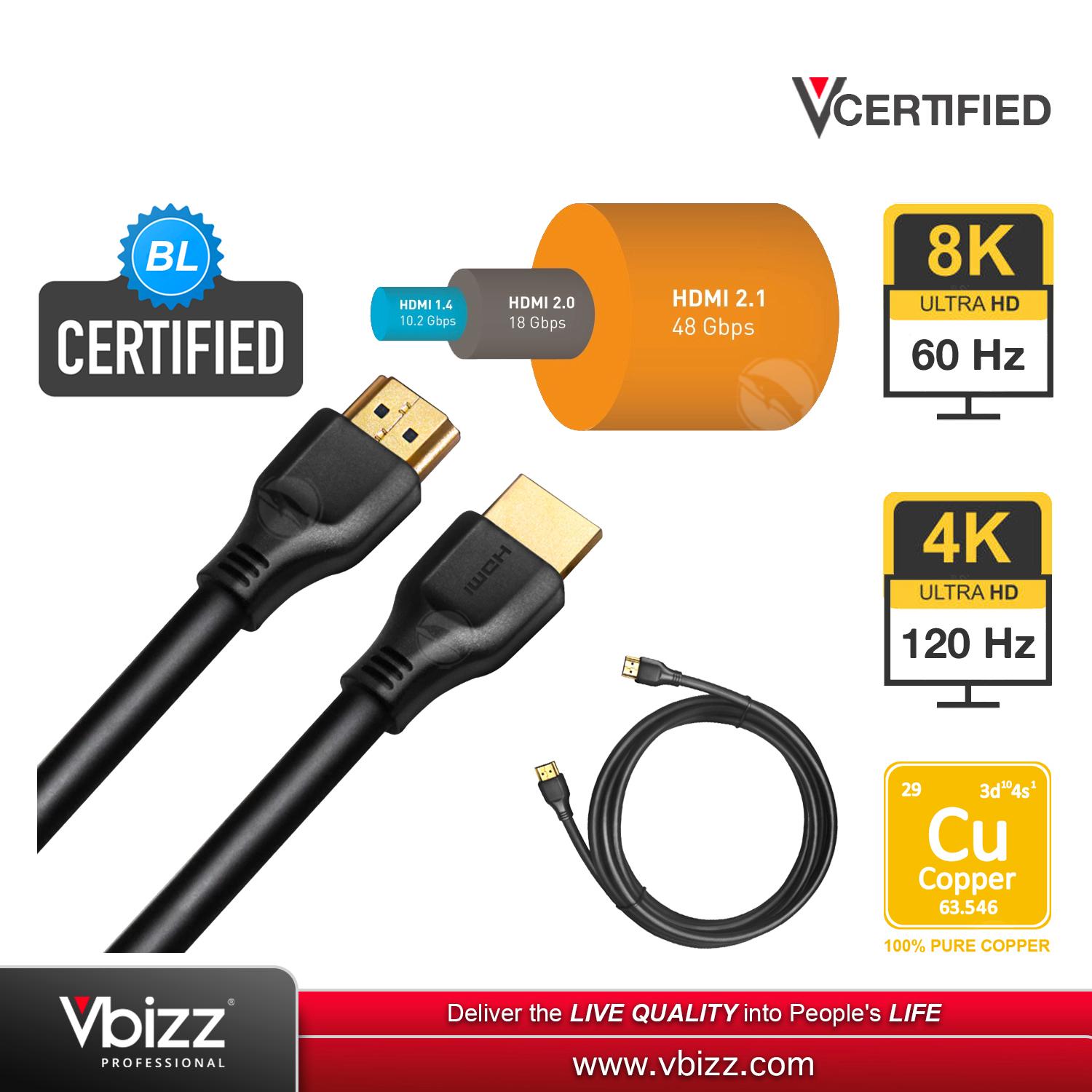1 - 10M 8K 4K HDMI 2.1 Full Copper Cable
An HDMI 2.1 cable is a type of High-Definition Multimedia Interface (HDMI) cable that supports the HDMI 2.1 specification. HDMI 2.1 is the latest version of the HDMI standard and offers several enhancements over its predecessor, HDMI 2.0.
- HDMI 2.1 with Full copper wire, maximum can support up to 10M
- If you need longer than 10M, you have to go for Fiber Optical Cable
- Specification:
- 28 AWG
- Diameter 7.3MM
- HDMI Type A to Type A
- Support 8K (7680 x 4320)
- Support 10K (10240 x 4320)
- Support 4K / 120Hz
- Support 8K / 60Hz
- Support eARC (Enhanced Audio Return Channel) audio signal
- With Braid
- With Aluminium Foil
- With Ground Wire
- Oxygen Free Copper
An HDMI 2.1 cable is a type of High-Definition Multimedia Interface (HDMI) cable that supports the HDMI 2.1 specification. HDMI 2.1 is the latest version of the HDMI standard and offers several enhancements over its predecessor, HDMI 2.0.
Here are some key features and benefits of HDMI 2.1 cables:
Increased bandwidth: HDMI 2.1 cables provide higher bandwidth capabilities, allowing for faster data transfer rates. This increased bandwidth supports higher resolutions, refresh rates, and color depths.
Higher video resolutions: HDMI 2.1 supports resolutions up to 10K, enabling ultra-high-definition video playback. It also allows for 8K resolution at higher refresh rates and 4K resolution at extremely high refresh rates, providing smoother and more detailed video playback.
Enhanced refresh rates: HDMI 2.1 supports higher refresh rates, such as 120Hz, 144Hz, and even 240Hz, depending on the resolution. This results in smoother motion, reduced motion blur, and improved gaming and sports viewing experiences.
Variable Refresh Rate (VRR): HDMI 2.1 introduces support for VRR, which synchronizes the display's refresh rate with the output of the graphics card. This technology reduces screen tearing and stuttering in games, resulting in a more fluid and responsive gaming experience.
Auto Low Latency Mode (ALLM): HDMI 2.1 includes ALLM, which allows compatible devices to automatically switch to a low-latency mode when connected. This feature is particularly beneficial for gaming, as it reduces input lag for a more responsive gaming experience.
Enhanced audio features: HDMI 2.1 supports advanced audio formats, including Enhanced Audio Return Channel (eARC), which enables high-quality audio formats like Dolby Atmos and DTS:X. eARC allows for lossless audio transmission from compatible devices to audio systems, delivering immersive audio experiences.
It's important to note that to take full advantage of HDMI 2.1 capabilities, all the devices in the signal chain, including the source device (e.g., gaming console, Blu-ray player, etc.), cables, and display (e.g., TV, monitor, etc.), need to be HDMI 2.1 compliant.
When purchasing an HDMI 2.1 cable, ensure that it is certified for HDMI 2.1 specifications. Certified cables undergo testing and meet specific performance standards.
| Size | Uploaded | |
|---|---|---|
Product Catalogue | ||
| Minkez_8K-4K-HDMI-2.1-2.0-Full-Copper-Cable_Catalogue.png | 1.44 MB | Dec 31 , 2024 |


